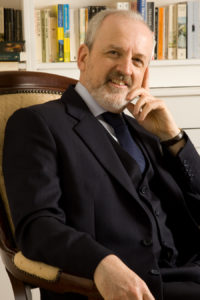 I might be old fashioned, but I do prefer magic that has a context or a framework for the impossible event that is happening. For me, a visual piece of magic eye candy is nice, but ultimately less satisfying than an effect which builds through presentation to a satisfying magical conclusion.
I might be old fashioned, but I do prefer magic that has a context or a framework for the impossible event that is happening. For me, a visual piece of magic eye candy is nice, but ultimately less satisfying than an effect which builds through presentation to a satisfying magical conclusion.
Magic is, of course, totally illogical. Most effects that we create have little foundation in reality, and it is that very fact that makes it interesting. If magic was no more surprising or interesting than using a remote to ‘invisibly’ turn on a TV, then it wouldn’t be something that anyone would be prepared to pay to witness.
But nevertheless, magic that happens for no plausible rhyme or reason, to my mind does lack something. I like it when magic is put into a context, however implausible, to justify the illusion. Visibly changing a pile of blank paper into bank notes is good, but if you can create, through plot or presentation, a reason why the paper needs to change to money, that to me makes for a better trick.
I have always been someone who tries to create patter for a trick that justifies the action. For instance, in my effect Keyed In, pictures of keys appear on blank playing cards not just because I can make it happen, but because I patter about how in the future people will have house ‘key cards’ rather than metal keys, and they will be able to create house keys to give to their friends and family themselves.
Although the explanation seems a little far fetched, the fact that hotels already use plastic cards as door keys makes it seem possible that in the future we may use similar key cards for our front doors too. So it is a reason, however unlikely, for why you might need to make keys appear on cards. Without this justification, the trick would lack any sort of logic, perverse or otherwise.
Although I am not suggesting that literally every tick has to be explained away, I must admit the vast majority of my tricks do begin with phrases such as, “Have you ever noticed that…”, or “Have you ever wondered why….” or “Have you seen the latest….”, all of which then lead me to patter into the magic effect itself.
The value, to my mind, of setting some sort of context is to enable the spectators to relate to what they are about to see. If I start a trick by explaining that I am going to show them a way to overcome a common problem which many of them will perhaps have experienced, I feel it gives the spectators some sort of tenuous connection to what they are about to see, and therefore hopefully makes the magic appear more relevant to them and their lives.
Another patter premise that I use is to start by saying, “When people find out I’m a magician, they tend to say….” and then I illustrate what people normally ask through the magic trick. So, for example, I use, “When people find out I’m a magician, they tend to say, ‘Can you make me some money?’ Because that would be a brilliant way to use magical skills, wouldn’t it? Well, I can. Let me show you.” And I then go into a routine in which coins appear.
Now, I could just walk up and start producing coins, but by prefacing the effect with the right patter, there’s now a ‘reason’ for why I am doing it.
